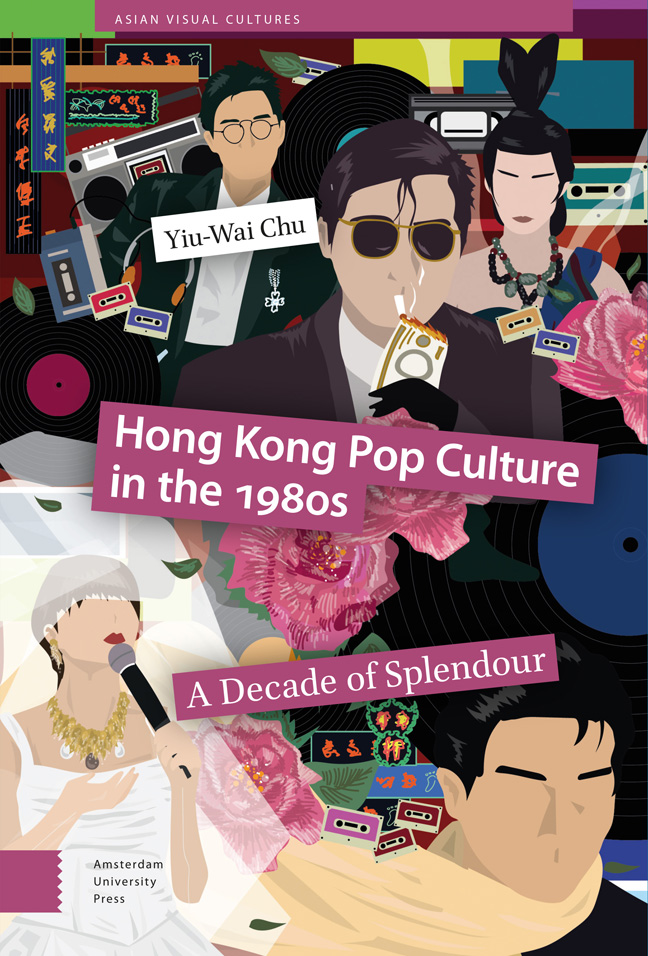Book contents
- Frontmatter
- Acknowledgments
- A Note on Romanization and Translation
- Contents
- Dedication
- Prologue: Horse Racing and Dancing as Usual
- Introduction
- 1 Televising Pop: New Stars and Renewed Sensibilities
- 2 Golden Days of the Silver Screen: Cinematic Imagination in a Not Yet Fallen City
- 3 The Sound of Chinese Cool: Do You See the City Sing?
- 4 The Importance of Being Chic: Fashion, Branding, and Multimedia Stardom
- 5 The Practice of Everynight Life: Disco as Another Kind of Dance
- 6 (Un)Covering Cosmopolitan Hybridity: Every Great City Deserves a City Magazine
- Epilogue: ‘We’ll Always Have Hong Kong’
- Select Bibliography
- Glossary
- Index
Introduction
Published online by Cambridge University Press: 20 February 2024
- Frontmatter
- Acknowledgments
- A Note on Romanization and Translation
- Contents
- Dedication
- Prologue: Horse Racing and Dancing as Usual
- Introduction
- 1 Televising Pop: New Stars and Renewed Sensibilities
- 2 Golden Days of the Silver Screen: Cinematic Imagination in a Not Yet Fallen City
- 3 The Sound of Chinese Cool: Do You See the City Sing?
- 4 The Importance of Being Chic: Fashion, Branding, and Multimedia Stardom
- 5 The Practice of Everynight Life: Disco as Another Kind of Dance
- 6 (Un)Covering Cosmopolitan Hybridity: Every Great City Deserves a City Magazine
- Epilogue: ‘We’ll Always Have Hong Kong’
- Select Bibliography
- Glossary
- Index
Summary
Abstract
The 1980s was a critical and transitional decade for Hong Kong, in connection with not just politics and economics but also culture and lifestyle. Against this backdrop, this chapter offers a brief account of “Hong Kong” and its people, the choices of pop culture and the emphasis on a single decade in relation to present researches on these topics. It is argued that Hong Kong's stardom can be effectively studied from the perspective of creative synergies among different media texts. The notion of “multimedia stardom” is adopted to highlight the synergies among various practices of pop culture in the 1980s.
Keywords: cosmopolitan hybridity, multimedia stardom, nostalgia, decade studies, momentum
The concept and structure of this book were partially inspired by Leo Ou-fan Lee's City between Worlds: My Hong Kong, in which the author walked in the city, trying to ‘find out what indeed is (or was) there, in Hong Kong's past, that may still shed light on its culture today’. According to Lee, a long-time Hong Kong resident, the city means quite different things to different groups of people: the natives who grew up there and experienced it as the context for everyday life, the expatriates who came to work in its robust finance centre, the British who created the colonial face of the city, and the urban and global residents whose emerging consciousness encompassed and transcended that of the previous groups. Lee had chosen to look at his Hong Kong from this perspective: ‘voicing opinions, wherever possible, on behalf of a Chinese community whose members have not chosen to write about their city in English’. ‘Each chapter presents a slice of the city's history and culture,’ in addition, ‘called up by the streets, sites, and artifacts themselves, and by association with literature and film.’ Taking this as the critical backdrop, the chapters in this book – structured around walking tours – were conceived to touch on different ‘slices’ of Hong Kong pop culture in the 1980s:
While writing this book, I found myself constantly trying to draw mental maps not only from the many walks and wanderings I have taken all over these areas but from the diverse anecdotes, vignettes, memoirs, and fiction I have read, and films I have seen. In piecing together these fragments, I do not arrive at an overall picture of this ‘city between worlds.’
- Type
- Chapter
- Information
- Hong Kong Pop Culture in the 1980sA Decade of Splendour, pp. 29 - 54Publisher: Amsterdam University PressPrint publication year: 2023

